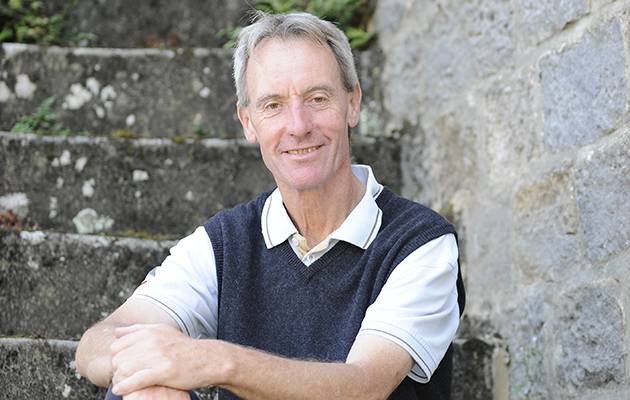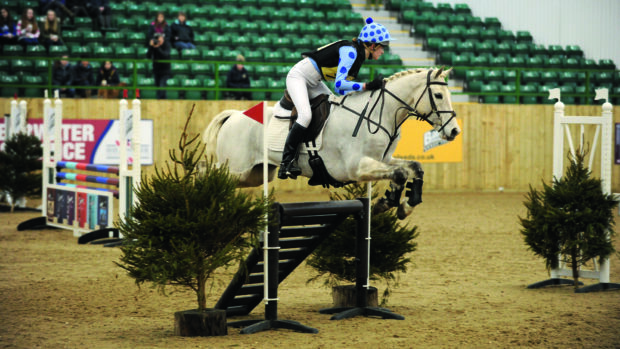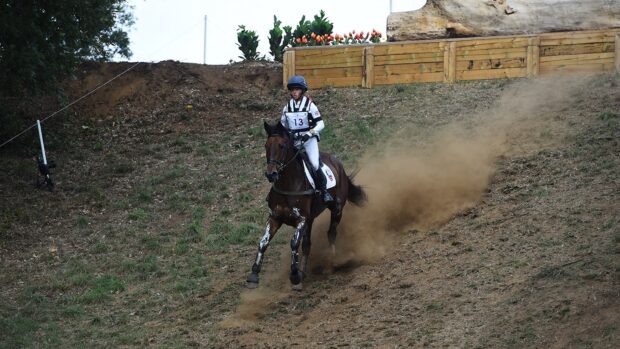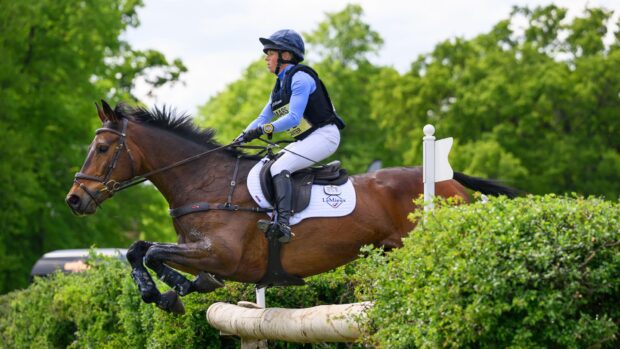1. It’s good to have an aim, a six-month goal. Goals are important, but they should be realistic and flexible. Be confident at one level in all three phases before you move up or you will get caught out at some point; don’t go to an event just because that’s what you planned if you’re not ready. If you have owners, discuss this openly with them and share your thought process on what is right for each horse.
2. When you first get on, trot round with the horse long and low and stretching for five or 10 minutes. This will allow the horse to give with his back and build up muscle. Then when the horse comes up into a contact, his back is pliable and you can sit on the trot if you need to do so. If the horse is tense in trot, work him in canter first. Use the most comfortable pace to achieve relaxation.
3. Make lungeing part of the horses routine, so if you are late arriving or in a rush, a horse can be lunged — it can be a useful short cut.
4. You have to be able to put the leg on and get a reaction. If the horse isn’t going forward, give him a jolly good kick, rather than nagging — no one wants to be nagged. Then you can slow the trot down again.
5. It’s important the horse understands what is right and wrong. You want to get horses on side, not for them to be confused and the rider frustrated. I can’t bear to see people being rough with horses. If it gets to a point where the horse is agitated — or even where I am agitated — I stop, walk and think about how I can do this differently.
6. Reward horses when they do something right. And use one smack behind the leg to punish bad behaviour — such as running out at an obstacle they have already jumped several times successfully. Don’t punish a genuine mistake. Repeat the exercise, put the fence down if necessary and start again.
7. It’s important horses can jump out of walk, trot and canter. Jumping out of walk is hideous, I have to make myself do it. But it teaches the rider to react quickly when the horse takes off. It gets horses to push off their hocks and is useful for ones who rush. And it gives horses confidence they can jump a rail or ditch or drop from walk if they have to, even though it’s not the ideal pace.
Article continues below…
You might also be interested in:

Subscribe to Horse & Hound magazine today – and enjoy unlimited website access all year round

16 pearls of wisdom from top British rider Tina Cook
The former European champion on taking her time, ex-racehorses and why horses trip

Chris Bartle’s top training tips for modern eventing
Learn from the master with our summary of key training themes from Chris Bartle’s modern eventing masterclass
8. Don’t build fences to catch a horse out at home — confidence is everything. And don’t set up fences so you have to pull away from them. Horses need to learn to look at fences with a view to jumping them.
9. If a horse is strong, get a feel in the hand in the warm-up so it doesn’t go from nothing in the warm-up to strong in ring.
10. If you are doing a single fence exercise, don’t keep going for more than eight jumps without a break. If it hasn’t gone well by then, it’s not going to go better for doing it 15 more times. If it’s really not going well, there’s always another day.
11. Be strict on straightness on basic exercises.
12. My horses give the extra inch because we have a partnership and it’s fun. As a rider, my job is to train each horse to be the best it can. And training has to be enjoyable for horses.
Tina shared these tips during a masterclass organised by the British Eventing (BE) Charitable Foundation at Merrist Wood in Surrey. There are two BE masterclasses left this winter — 14 December at Kingston Maurward, Dorset, with Lucinda Green and 16 February 2019 at the Scottish National EC, Broxburn, with Andrew Nicholson.
For all the latest news analysis, competition reports, interviews, features and much more, don’t miss Horse & Hound magazine, on sale every Thursday.




